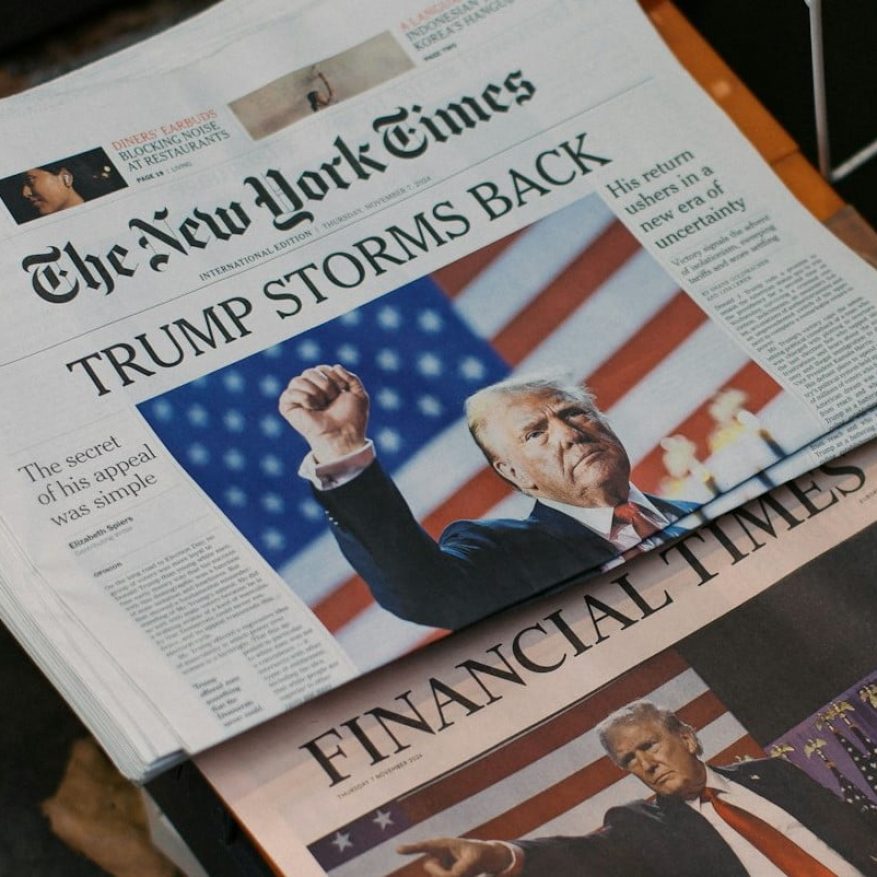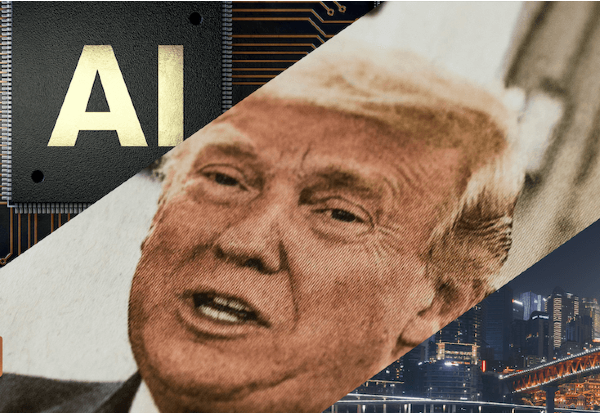Tech, Trump and China: three forces for the year ahead
Part of investing is monitoring macro forces. Global megatrends and events from various fields can help to set the long-term course for markets. Sometimes they are driven by human ingenuity. Think of the invention of the motor car or the spread of the internet. Often, it is geopolitics that reroutes economies. A decisive election, for example, or a trailblazing policy by the government of a commercial powerhouse.
In 2025, multiple technological and geopolitical tides demand the attention of the watchful investor. Here are three that deserve our attention.


Technology marches on
The rapid advancement of technology continues unabated. The growing enthusiasm for artificial intelligence (AI), particularly generative AI (GenAI), is steadily translating into real business applications, revenue, and profits.
However, only a handful of companies are capturing the majority of these gains. Meta is a prime example. By investing heavily in AI models and infrastructure, it has enhanced recommendation algorithms on Facebook and Instagram, leading to more effective targeted advertising. The results have been impressive—by the end of 2024, users were spending nearly 10% more time on Meta’s platforms, and advertising prices had increased by 11% compared to the previous year.
Nvidia has emerged as another major AI success story. As the leader in AI hardware, it supplies the critical “picks and shovels” powering AI’s computational demands. In Q3 2024, Nvidia reported revenue of $35.08 billion—an astounding 94% increase from the previous year, surpassing its August forecast by $2.58 billion.
Meanwhile, companies like Amazon, Alphabet, and Microsoft are still in the earlier stages of monetizing AI and GenAI. Much of their strong share price performance in 2024 stemmed from improvements in their core business operations.
For Amazon, robust e-commerce sales and a recovery in cloud revenues following the 2022/23 market slowdown have driven significant growth. Increased revenue and improved operational efficiency have resulted in record operating margins—quadrupling over two years to 10%—and unprecedented free cash flow levels.
These companies are making substantial strides in their AI initiatives. The momentum is evident. As Microsoft noted in a recent earnings call: “Our AI business is on track to surpass an annual revenue run rate of $10 billion next quarter, making it the fastest business in our history to reach this milestone.”


The Trump Effect
Donald Trump’s decisive victory has sent shockwaves through the markets, with investors largely responding positively to the news. While it will take time for the new Trump presidency to take shape, strong signals indicate significant policy shifts on the horizon.
The President-elect’s proposed economic policies are poised to create a delicate balance between growth and inflation. On one hand, Trump aims to accelerate U.S. economic growth through sweeping tax cuts and a “drill baby, drill” energy strategy. On the other hand, his threats to impose large-scale tariffs on imported goods, combined with expansionary policies, could generate inflationary pressures.
Adding another layer of complexity, Trump’s proposed mass deportation of illegal immigrants could further drive up prices by reducing labor supply and increasing wage demands.
However, several factors could influence how these policies ultimately unfold. First, Trump has a history of using tariff threats as a bargaining chip—often achieving his goals through negotiation rather than enforcement.
Second, the potential for growth, lower taxes, and efficiency gains may offset inflationary forces. The newly proposed Department of Government Efficiency, under the stewardship of Elon Musk and Vivek Ramaswamy, could streamline operations, eliminate wasteful spending, and free up capital for more productive uses.
Additionally, U.S. companies might choose to lower their gross margins to absorb some of the inflationary impact, mitigating price hikes for consumers. Likewise, global manufacturers, particularly in China, may adjust their pricing strategies to remain competitive despite potential tariffs.
As Trump’s administration takes form, investors will closely watch how rhetoric translates into action. Key questions remain:
- Will the threatened tariffs become reality?
- Can Trump effectively reduce the budget deficit?
- How closely will inflation trends align with policymakers’ expectations?
- Will the U.S. dollar continue to strengthen under Trump 2.0?
The months ahead will reveal whether Trump’s economic agenda can strike a balance between growth and inflation, or if the markets are in for a bumpy ride.

China: Comeback or Come Down?
China, once hailed as the global economic miracle, is now facing significant headwinds. The sharp decline in property prices has dealt a heavy blow to household wealth and strained the financial position of local governments. Youth unemployment has soared to record levels since the COVID-19 pandemic, and consumer confidence remains subdued—largely driven by sluggish wage growth that has fallen short of expectations.
In response, Chinese fiscal and monetary authorities have implemented a broad range of expansionary measures aimed at stimulating the economy. These initiatives include lower interest rates, reduced capital requirements for banks, and easier access to credit. A key metric to watch in assessing the effectiveness of these policies will be the level of credit extension by banks, alongside indicators such as employment growth, consumer confidence, and real wage improvements.
Complicating China’s economic outlook is the evolving trade dynamic with the United States. As discussed earlier, potential disruptions in U.S.-China trade relations, particularly under the Trump administration, could have far-reaching consequences for asset prices and economic stability. Tariff escalations or policy shifts could further dampen investor sentiment and economic momentum.
Despite the aggressive policy interventions, a swift turnaround in China's economic fortunes appears unlikely. Instead, a more measured and gradual recovery is expected, contingent on sustained policy support and improved domestic and global conditions.
The coming months will provide valuable insights into whether China can regain its growth trajectory or if it will continue to struggle with structural challenges and external pressures.





